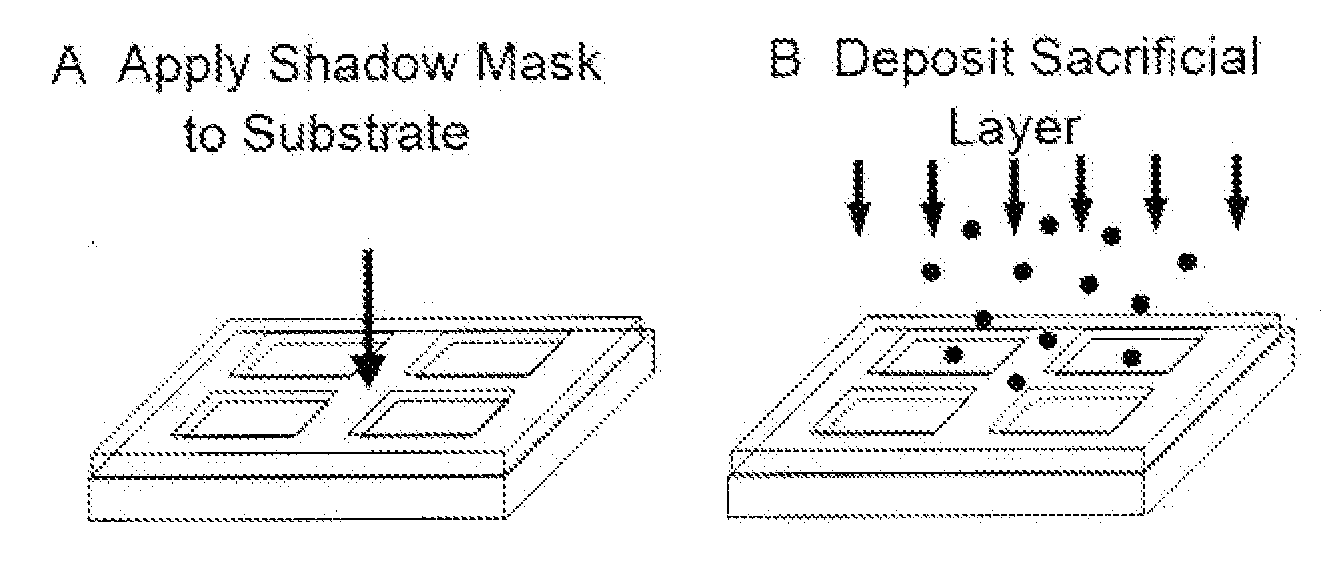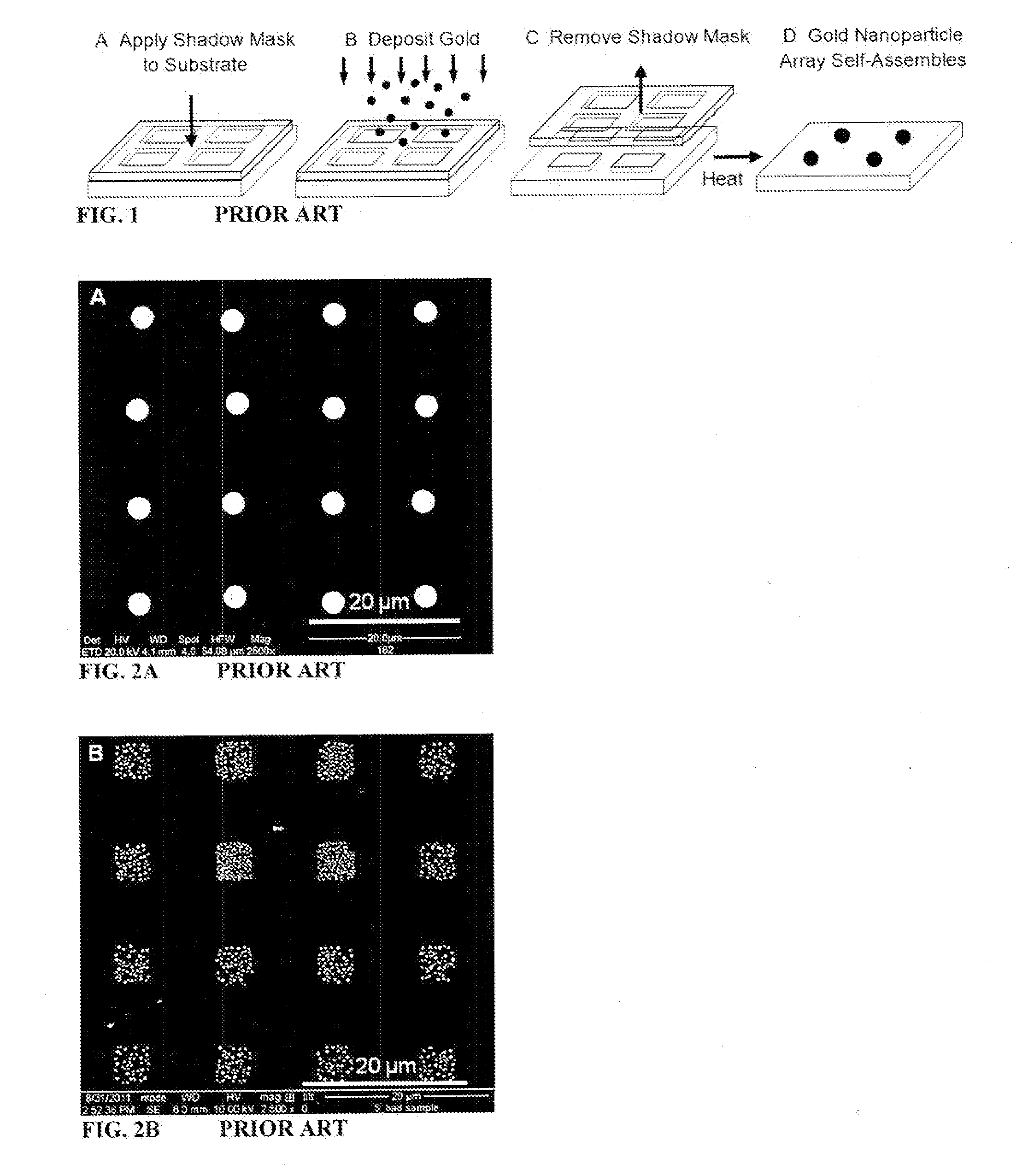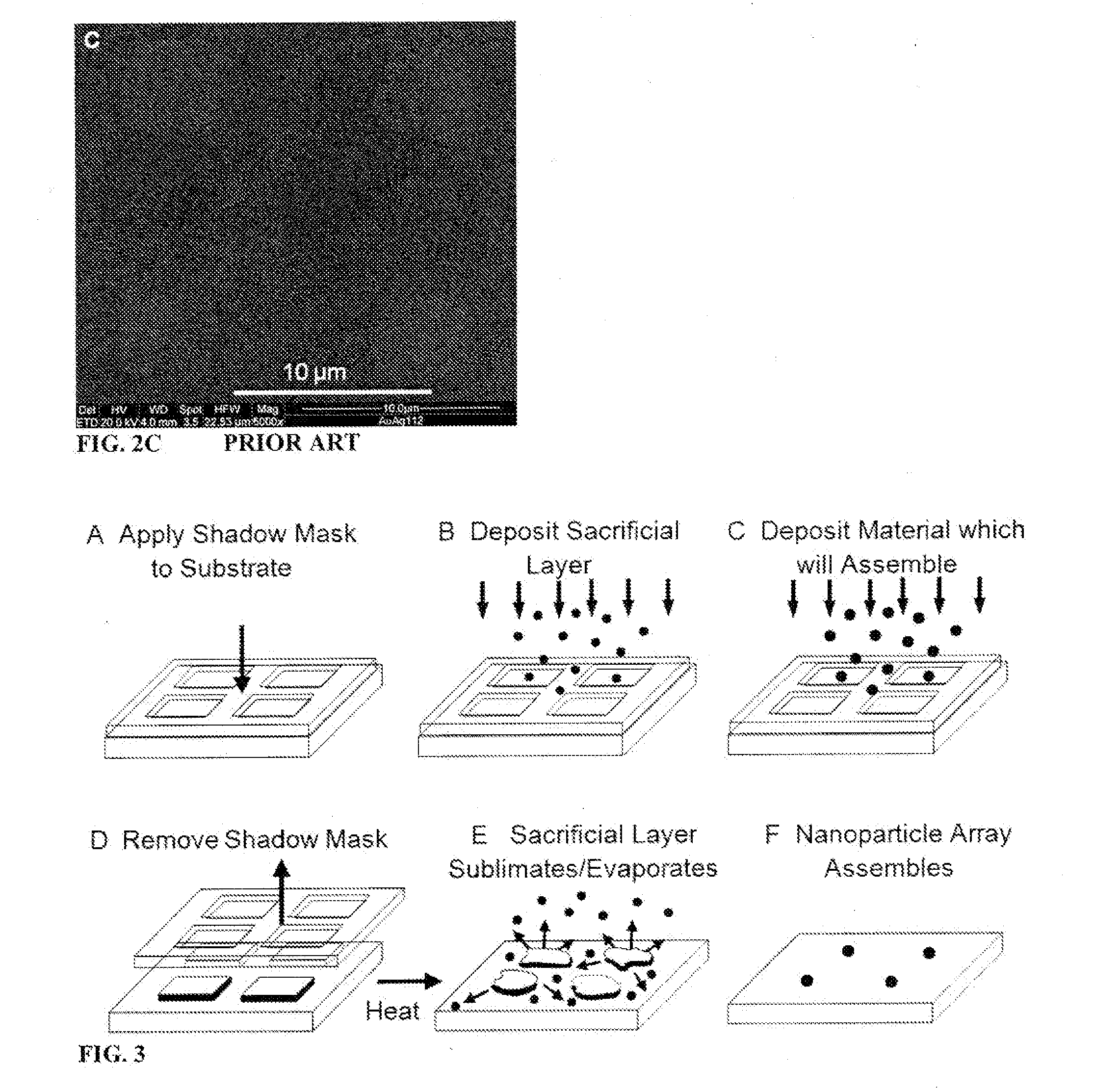Self-assembly of small structures
a self-assembly and structure technology, applied in the field of structure formation, can solve the problems of high complexity of the mechanism driving dynamic templating, and achieve the effects of reducing the area of the structure, enhancing the agglomeration process, and facilitating the fabrication of dynamic template widths
- Summary
- Abstract
- Description
- Claims
- Application Information
AI Technical Summary
Benefits of technology
Problems solved by technology
Method used
Image
Examples
example 1
Gold on (0001)-Oriented Sapphire using Antimony Pedestal
[0195]A sapphire substrate with a (0001)-orientation, obtained from a commercial vendor (MTI Corporation), was cut to size (8 mm×8 mm×0.5 mm) and then cleaned in an ultrasonic bath using common solvents (methanol, acetone, isopropanol). A shadow mask was mechanically clamped over the substrate surface and then mounted onto the sample holder assembly in a pulsed laser deposition (PLD) chamber (Neocera Pioneer 120). The shadow mask consisted of an electroformed nickel mesh (Precision Eforming) with 5 μm×5 μm square openings and a repeat spacing of 12.5 μm. The exposed mesh area had a diameter of 5 mm. The deposition chamber was then evacuated to a base pressure of 10−7 torr. Mounted on the target carousel of the deposition chamber were 1″ (25 mm) diameter targets of antimony (Kurt J. Lesker) and gold (Alfa Aesar). Antimony was first deposited through the mask using PLD.
[0196]Pulses from an excimer laser (Lambda Physik Compex 102 ...
example 2
Silver on (0001)-Oriented Sapphire using Bismuth Pedestal
[0197]The procedure was the same as Example 1, except as follows. The targets mounted on the target carousel of the deposition chamber were 1″ diameter targets of bismuth and silver (Alfa Aesar). Bismuth was first deposited. A pedestal height of 480 nm was obtained using 7500 laser pulses. This deposition was immediately followed by a silver deposition of 0.36 nm obtained using 100 laser pulses. The tube furnace temperature was ramped to 750° C. in 13 min where it was held for 10 min after which the furnace was turned off and allowed to cool to room temperature. The array of sub-micrometer silver structures shown in FIG. 5 was formed.
example 3
Two-Layer Template
[0198]The procedure was the same as Example 1, except as follows. The targets mounted on the target carousel of the deposition chamber were 1″ diameter targets of antimony (Kurt J. Lesker), gold (Alfa Aesar) and silver (Alfa Aesar). The substrate used was (100) MgAl2O4. The pedestal consisted of 300 nm of antimony topped with 4 nm of silver. This deposition was immediately followed by a gold deposition of 3 laser pulses using a laser power of 1.5 J / cm2. When the mask was removed, a sub-monolayer of gold was left on the surface of each silver / antimony pedestal. The tube furnace temperature was ramped to 600° C. in 9 minutes where it was held for 30 min. The temperature was then ramped to 900° C. in 11 min to sublime the silver, after which the furnace was turned off and the sample was allowed to cool to room temperature. The array of nanometer-scale gold structures shown in FIG. 6a was formed. Because of the very small size of the nanoparticles, and the very small q...
PUM
 Login to View More
Login to View More Abstract
Description
Claims
Application Information
 Login to View More
Login to View More - R&D
- Intellectual Property
- Life Sciences
- Materials
- Tech Scout
- Unparalleled Data Quality
- Higher Quality Content
- 60% Fewer Hallucinations
Browse by: Latest US Patents, China's latest patents, Technical Efficacy Thesaurus, Application Domain, Technology Topic, Popular Technical Reports.
© 2025 PatSnap. All rights reserved.Legal|Privacy policy|Modern Slavery Act Transparency Statement|Sitemap|About US| Contact US: help@patsnap.com



